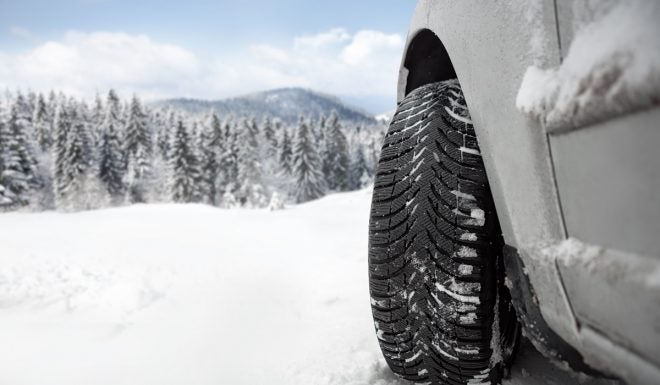Prepping Your Truck for Winter
AllOutdoor Staff 12.18.19

The frigid cold and snow of the winter months create an environment where you will need to take action to ‘winterize’ your truck and make it suitable and safe for driving in inclement weather.
Fortunately, the basic steps for winterizing a pickup truck like a Ford F-150 are universal. By taking the actions and tips that we are going to cover in this article, you will help your pickup truck perform better in winter driving.
Here are the top things you need to do in order to prepare your truck for the winter:
Check Your Tire Treads
Always inspect your tires for their tread and make it a rule to have them rotated with each tire change. The best way to make sure that the tread of the tires is suitable for winter travel? Take a penny, with Lincoln’s head facing you, and place the penny into the tread. If the head of Lincoln is still visible, the tires will not offer you enough traction for winter travel.
Inflate Your Tire
It’s not just your tread that can affect how you drive when it comes to your tires. It’s also your tire pressure. A low tire pressure in any weather is dangerous on normal roads but during winter this danger is amplified.
Change Your Oil
It’s always a good idea to change your oil regularly, and wintertime is no exception. When temperatures dip, your truck’s performance will be more efficient with fresh oil. So make it a rule to change the oil right before the winter months.
Swap Out Your Dirty Filters
This includes your fuel, air, and PCV. If these are not replaced before winter, they will become even less efficient and burn even more gasoline than in the summer months.
Check the Battery
The battery capacity of any vehicle will always lessen considerably during cold weather. Specifically request to have your battery inspected before the winter weather officially hits.
Confirm That the Heater and Defroster Are in Good Working Condition
Would you want either of these to go out during the winter? Would you want either of these to go out if you ended up stranded out in the middle of nowhere during a winter snowstorm? If the answer is no to both of these questions, then have the heater and defroster checked and confirm that they are in perfect working order.
Flush and Refill the Cooling System
The concentration and condition of the coolant in your pickup truck is something you should check regularly throughout the year, but there is a specific ratio for wintertime driving: An equal mix of water and antifreeze. Note: Never remove the radiator cap until the engine has completely cooled.
Purchase and Install Winter Wiper Blades
Yes, winter wiper blades are indeed a thing. These will offer better rigidity against ice during the winter. While you’re at it, invest in deicing windshield washer solvent and keep it in your vehicle.
Have the Brakes Checked
Fully functional brakes are critical for winter driving, especially if you’re going to be using your truck to haul a trailer.
Have A Winter Survival Kit in Your Truck at All Times
There are no exceptions. Keep a fully-stocked winter survival kit in your truck at all times.
At the bare minimum, this kit needs to include:
- Winter Shovel
- Pair of Boots
- Pair of Gloves
- Pair of Socks
- Flashlight with batteries
- Water Bottles
- Protein Bars or Energy Bars
- Emergency Flares
- Battery powered/hand crank radio
- Ice Scraper
- Map
- Neon Flag (for signaling)
- Vehicle jumper cables
- Warm Blankets
- Rock Salt
- Reflectors
- Tire Chains
- Tow Rope
Conclusion
By following each of the above tips, you can make your Ford F-150 expertly-outfitted for winter travel. Only a small percentage of truck drivers will actually follow each of the above winterization tips. Not surprisingly, these drivers are far more likely to run into problems. Don’t be one of them. Prepare well, drive safely and have fun out there.